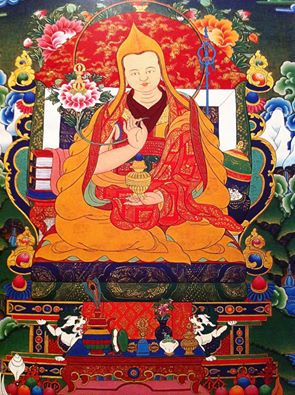
Elaborate ritual procedures are a hallmark of Indo-Tibetan tantra. Tantric rites are often long and complex. Ceremonies typically involve multiple parts or stages, replete with lengthy chanted liturgies, extensive visualizations and gestures, and the making of both physical and imagined offerings. The ability to memorize such procedures, and to properly and elegantly execute the intricate choreographies of body posture and movement, recited mantras, and imagined forms which they require, is crucial to tantric expertise. Large-scale and extended rituals which involve a lot of people, ritual trappings, and processes are important in Tibetan Buddhist contexts and are conducted frequently. Yet the prevalence of externally elaborate ritual performances should not be taken to mean that smaller, quicker and more ‘internal’ rites are not also a vital part of Tibetan ritual specialists’ work. Continue reading






